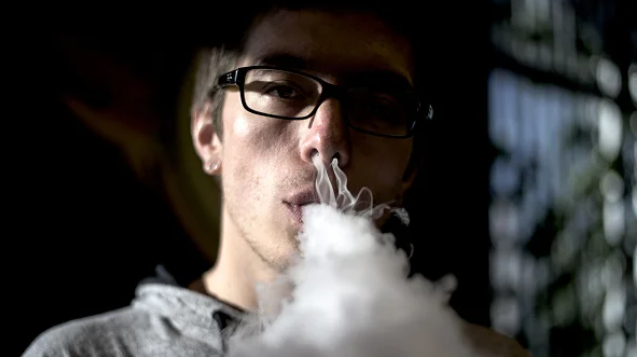Editor’s Note: This op-ed was originally published on The Hill on September 19, 2020.
Amid all the bad news of the COVID-19 pandemic, one bright spot was the relative resilience of young people. Then came a survey of more than 4,000 people aged 13 to 24 conducted in May: Users of e-cigarettes were five times more likely to be diagnosed with COVID-19 than non-users.
Since one in five 18- to 29-year-olds reports vaping regularly, the link to COVID-19 triggered a call in Congress for the FDA to clear e-cigarette products from the market for the duration of the coronavirus crisis.
The reaction is understandable but short-sighted. Declaring a multi-billion dollar industry illegal will only drive it underground. It will also make the health effects of vaping even more difficult to ascertain.
COVID-19 is not only putting thousands of Americans on ventilators; it is also sucking the oxygen from long term public health concerns. A prime example is the poor regulation of vaping compounds and devices. We know more about how the coronavirus acts on the lungs than we know about the lung effects of the different vaping liquids sold on the U.S. market. This is mainly because we have limited knowledge of all the ingredients contained in vaping cartridges and oils sold legally in stores and vape shops across the U.S., let alone those sold on the internet.
Sign up for Schaeffer Center news
Just as we need to test more people to contain the virus, we need to know what is contained in vaping oils and test all vaping products — assessing how high a device might heat liquids put in it — ensuring their safety. That is not being done, and even minimal safety regulations won’t affect all products until August 2022.
Even without a pandemic, widespread testing of vaping compounds and devices would be a vital public health issue. The possibility that vaping makes young lungs more vulnerable to COVID-19 creates an immediate crisis.
The use of e-cigarettes to vaporize nicotine, rather than burn tobacco with its associated carcinogenic tars, was initially hailed as a health breakthrough. Manufacturers were told in 2016 that they did not have to meet stringent pharmaceutical safety standards, as they were regulated by the FDA like tobacco instead of pharmaceuticals. The stage was set for a weakly regulated system that allowed e-cigarette and nicotine delivery products with unknown ingredients and additives to be legally sold. The market boomed, resulting in more than 460 different e-cigarette brands today.
The main retail source of e-cigarettes is vape shops. They frequently mix and distribute their e-liquids, with no oversight. Cannabinol (CBD) oils are also commonly sold in vape shops, even in states where cannabis remains illegal. One survey of 30 CBD products found that one third contained variations of synthetic cannabis and other potentially harmful chemicals.
Vitamin E acetate, a thickening substance used in tetrahydrocannabinol (THC), was linked to an outbreak of lung injuries from vaping that killed 60 people in the United States last year. But it is far from clear that lung injuries can be blamed on that substance alone. Too much is unknown about the ingredients and chemistry of vaping.
A public that was initially hopeful that e-cigarettes would help reduce smoking and addiction is turning skeptical. A recent study found that most people who intended to use e-cigarettes to kick the nicotine habit ended up continuing to smoke both traditional and e-cigarettes. Products from Juul, the largest maker of e-cigarettes sold in the United States, contain three times the liquid nicotine concentration than the same Juul products sold in Europe. Other e-cigarette manufacturers continue to develop and aggressively market stealth vaping devices, resembling USB sticks, pens, asthma inhalers, and car fobs that can be easily hidden, enabling teens to hide their habit from parents and teachers.
It is past time to get a handle on what is being sold in the nation’s vape shops. All products, including the proprietary liquids mixed at the shops, should be tested and their ingredients reported to the FDA. The shops should be prohibited from selling products — including delivery devices — that have not been tested. While it may not be possible to certify that a vaping product is 100 percent safe, testing will enable a complete picture of the health effects of vaping and hopefully weed out the pernicious chemicals that can lead to lung injury and greater vulnerability to disease, such as the coronavirus.
The unregulated vaping market today is a wild west of hucksters, unsubstantiated claims, and unknown ingredients. The health of our nation, particularly our young people, is riding on getting it under control.
Rosalie Liccardo Pacula is a senior fellow at the USC Schaeffer Center for Health Policy & Economics and is president of the International Society for the Study of Drug Policy.
